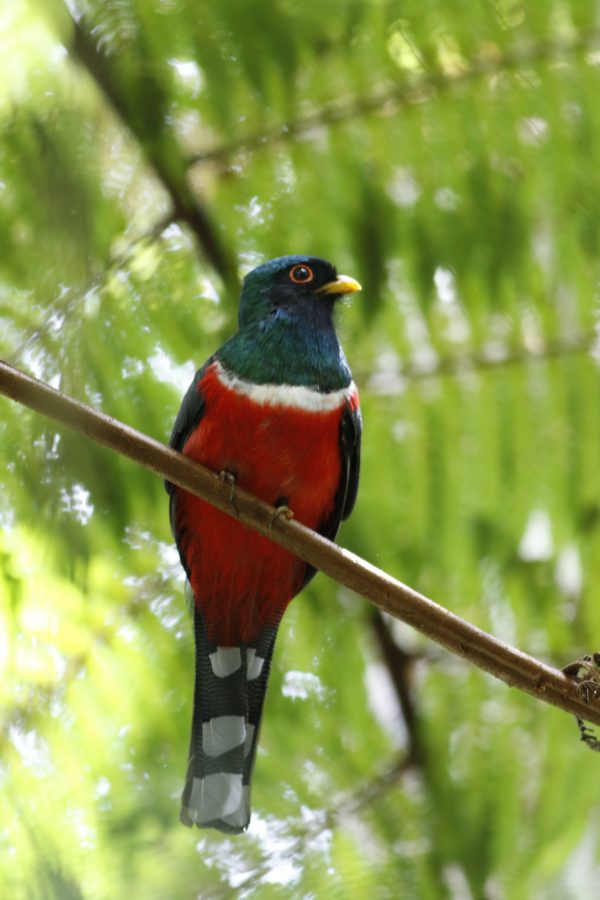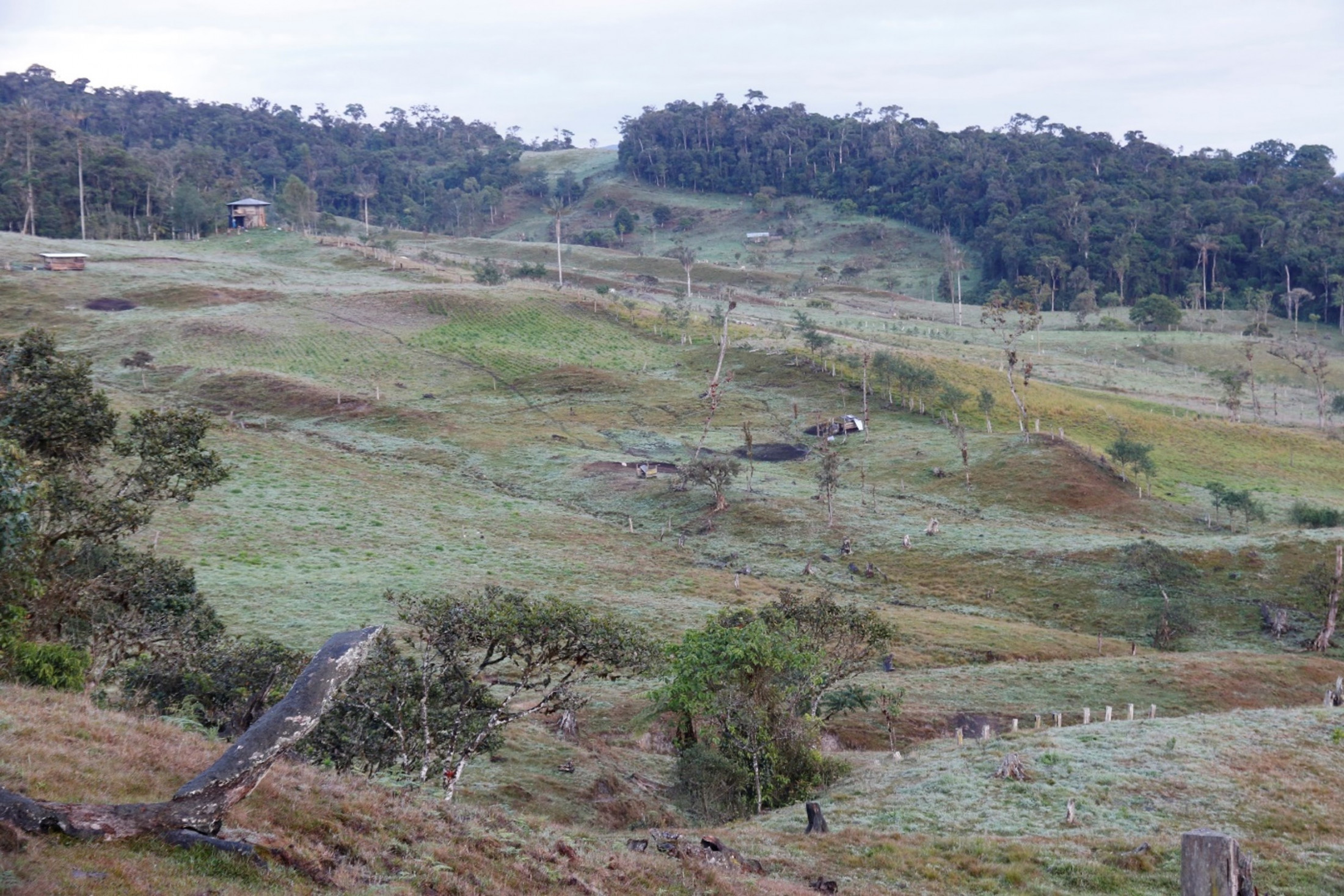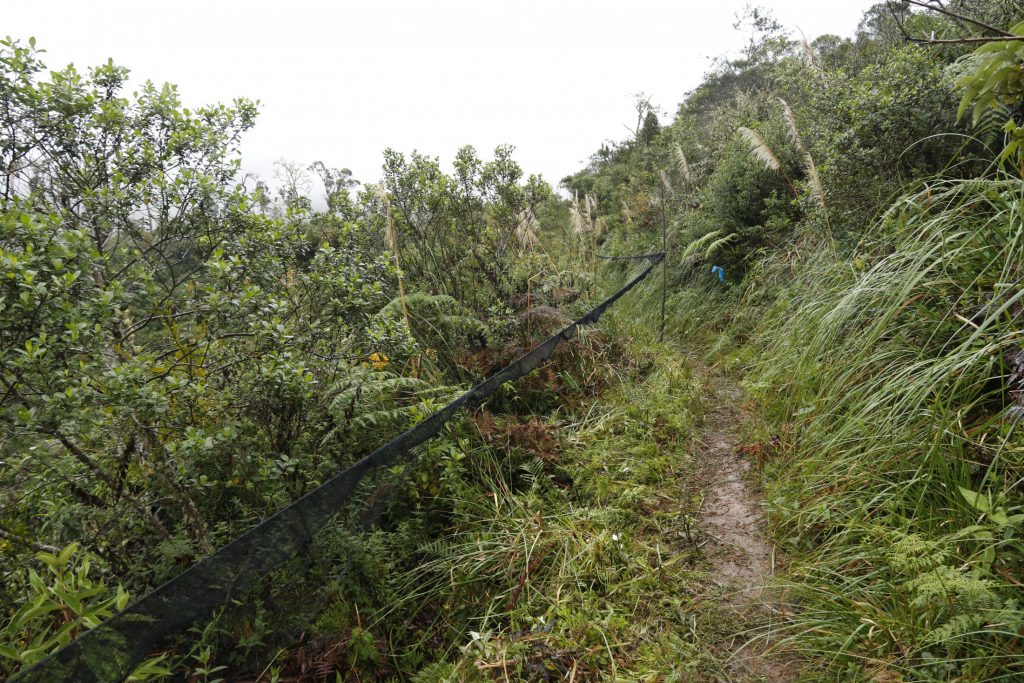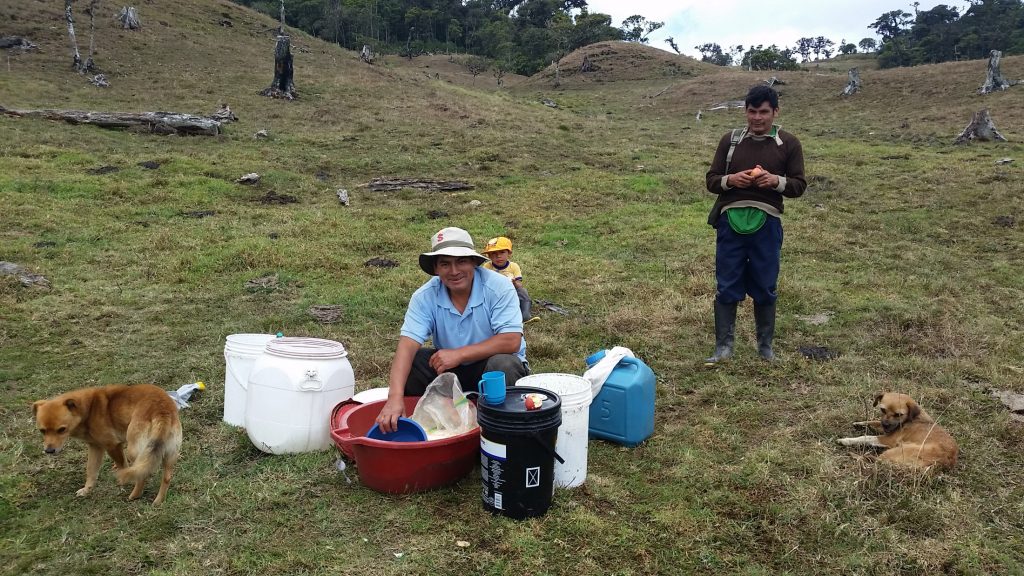Birds native to the tropical Andes, many of which cannot be found anywhere else, are threatened by increasing agricultural development in the region. A new study details how the resulting habitat loss affects specific species and lays out possible ways to protect birds from human-driven disturbance.
The researchers combined a meta-analysis of papers on birds across the Andes with five years of fieldwork in Peru, revealing that open farmlands result in up to a 60% decline in the number of species in an area. Before this work, there was little data on which species were declining or by how much.
“The vast majority of species that we’re working with in Peru have never been studied like this before,” said lead author Ian Ausprey, a postdoctoral researcher at the University of Bern and former doctoral student with the Florida Museum of Natural History. “Before, you couldn’t say whether a species was sensitive to disturbance or not because we really didn’t know.”

Photo courtesy of Ian Ausprey
The different habitats and diets of each species — like whether a bird forages on the ground for seeds or feeds on insects in the canopy — means they will have different conservation needs. This paper documents how specific species are affected and provides tailored guidance to conservationists.
The tropical Andes are a biodiversity hot spot and home to over 1,500 bird species. Many are adapted to a narrow range of environmental conditions, making them particularly vulnerable to disturbance. Ausprey and co-author Felicity Newell, a postdoctoral researcher and former doctoral student with the Florida Museum, sought to understand the relationship between avian diversity and the type of habitat birds live in.
To do this, they conducted extensive field surveys in Peru while living and working with community members over several visits between 2014 and 2019. During that time as embedded researchers, they surveyed the bird communities in a variety of landscapes, from forests untouched by agricultural development to silvopastures — land used simultaneously to grow vegetation and graze livestock.
The researchers combined three sampling techniques: point count surveys, which rely on the ear to listen for bird calls and accounted for 90% of detections; flock surveys, a visual technique that works well for birds that fly in large groups but may not sing much; and mist-netting, which safely catches birds in the understory and works especially well for hummingbirds. These complementary methods paint a fuller picture of the tropical Andes’ birds and where they are found.
Ausprey and Newell spent five years working on the study, sometimes staying in Peru for six months at a time to conduct surveys during both the wet and dry seasons. They timed their trips to overlap with the peak breeding season, when birds are most vocal and therefore easier to detect. Their results showed that species richness, or the number of different species in the landscape, declined as much as 93% from forests to open pastures. They also found, however, that species richness on highly developed land could be increased by 18% to 20% with 10 additional silvopasture trees or 10% more fencerows per hectare.

Photo courtesy of Ian Ausprey
Ausprey and Newell supplemented their findings with a literature review of studies on Andean forest birds in disturbed landscapes. Analyzing 14 studies representing 816 species, they found that species feeding primarily on insects and fruits were the most vulnerable. Highly specialized species, such as those adapted for narrow elevation bands or small geographic ranges, were also particularly sensitive.
One such bird is the endangered Lulu’s tody-flycatcher (Poecilotriccus luluae), a small and colorful bird with a limited geographic range in northern Peru. It prefers the shrubby type of landscape that forms in the 15 to 30 years after a pasture is abandoned and vegetation begins to grow back.
“Knowing what area to conserve for that species is important information,” Newell said. “Some of it is known already, anecdotally, but this quantitatively shows that that species uses this type of habitat.”
The researchers recommend sparing forest fragments — the larger the better — since any mature forests left standing act as reservoirs for forest bird diversity. They also suggest ways to mitigate the effect of land development by leaving some trees untouched in grazing pastures and maintaining shrubby habitats like those preferred by the Lulu’s Tody–Flycatcher.
While climate change is also transforming forests, in this study the authors chose to focus on shifting agriculture, which they say is the major driver of deforestation in the region. It is also showing few signs of slowing down.
“If there’s no forest or the forests are too small to sustain organisms, then we’re going to lose these birds regardless of what happens with the climate,” said Scott Robinson, senior author of the study and the Ordway eminent scholar at the Florida Museum.
In the tropical mountains of Latin America, deforestation is primarily driven by single families trying to support themselves by planting crops and raising livestock. The resulting landscape is a patchwork of forest fragments, shrub habitats, cattle pastures and small homes with vegetable gardens. Ausprey and Newell lived and worked directly with community members and local conservation advocates to gather data and conduct field surveys.
“Their lives are based in those landscapes, and they have a lot of appreciation for the nature there,” Ausprey said. “We hope that these results will inform their decision–making in the future so that they can have high quality standards of living while also maintaining a high level of biodiversity in their backyards.”
These results form the foundation of a more comprehensive database on how bird species in the Andes respond to human disturbance. In the future, Ausprey and Newell hope to apply these principles to other ecosystems and learn how climate extremes will play a factor. They are already monitoring changes to rainfall patterns, which are harmful to insect populations and may have cascading effects on birds that feed on bugs.
“This is really just a start,” Newell said. “There are tons of data-deficient species across the Andes and across the tropics in general, where we really don’t know how species are responding to land use or climate change or other anthropogenic disturbances.”
The study was published in the journal Conservation Biology.
The work was funded by the National Geographic Society, the Florida Museum’s Katharine Ordway Chair of Ecosystem Conservation, the University of Florida’s Tropical Conservation and Development Program, the American Ornithological Society, the Wilson Ornithological Society, Florida Museum travel grants, the UF department of biology, IDEA WILD, UF’s Graduate School and the UF Biodiversity Institute.
Sources: Ian Ausprey, iausprey@ufl.edu;
Felicity Newell, fnewell@ufl.edu;
Scott Robinson, srobinson@flmnh.ufl.edu
Writer: Jiayu Liang, jiayu.liang@floridamuseum.ufl.edu, 352-294-0452



